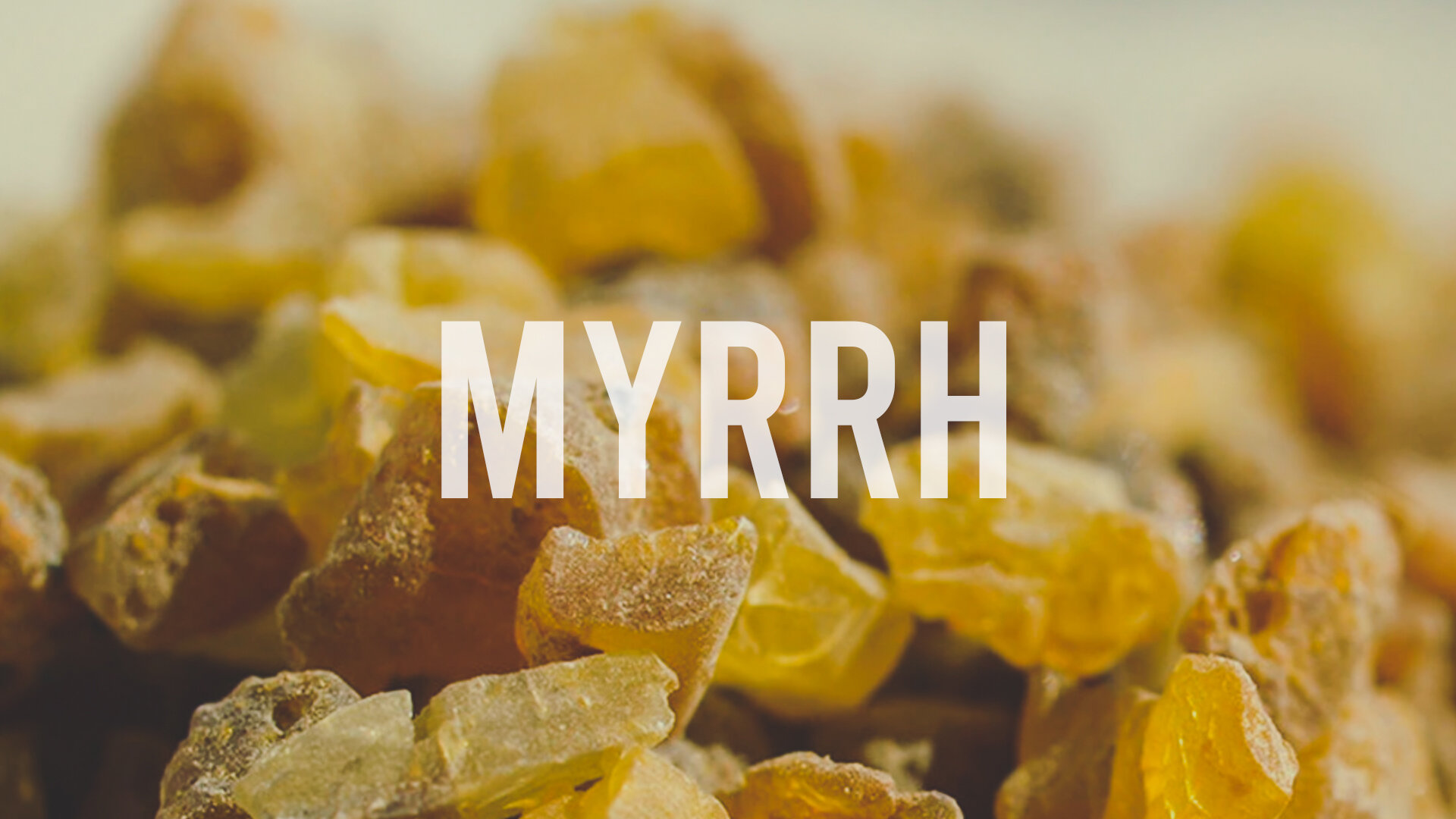MYRRH
WHAT IS MYRRH?
Natural ingredient for perfumery overview
Botanical Name: Commiphora myrrhaCommiphora myrrha, called myrrh, African myrrh, herabol myrrh, Somali myrrhor, common myrrh, or gum myrrh is a tree in the Burseraceae family. It is one of the primary trees used in the production of myrrh, a resin made from dried tree sap. The tree is native to the Arabian peninsula (Oman, Yemen) and to Africa (Djibouti, Ethiopia, Somalia, Northeast Kenya). It is called 'mur' (المر) in Arabic, meaning bitter. It is the gum of the myrrh tree. Its oil is called oleoresin. It famously comes from Mecca, so it is called 'Mur Makki'.
It is anti-bacterial, anti-fungal, anti-pest and can be used for fumigation or oral use. It has been used as an astringent, antiseptic, anti-parasitic, anti-tussive, emmenagogue, and anti-spasmodic agent. It was commonly included in mixtures used to treat worms, wounds, and sepsis.
— Wikipedia (commimphora myrrha)
As a perfumery material, the crude Myrrh is one of the oldest known, and it is mentioned as far back as 3700 years ago in ancient history.
Olfactive description
[Crude] The odor is warm-balsamic, sweet and somewhat spicy- aromatic; it is also somewhat sharp or pungent when fresh, but it is never terebinthinate (S. Arctander).
[Oil] Its odor is warm-spicy, often showing a very peculiar, sharp-balsamic, slightly medicinal top- note with a delightful “lift”, free from any terebinthinate notes. The sweetness increases to a deep, warm-spicy and aromatic dryout which is quite unique and difficult to duplicate. The tenacity is not very outstanding (unless the oil contains extracted matter!). The flavor of myrrh oil is warm, somewhat pungent, but very rich and pleasantly aromatic (S. Arctander).
Where it grows
The trees, often mere shrubs, grow in various parts of eastern Africa, north of the Equator, and in southern Arabia opposite the East African coast. It is collected in Arabia, Ethiopia (now including Erithrea), Somaliland and parts of Sudan. The main shipping ports are Djibouti, Aden, Massaua and Port Sudan (S. Arctander).
Method of extraction
By steam distillation of crude myrrh, an essential oil is obtained. Lumps are peeled off the trunk, and these usually make a better grade of myrrh (S. Arctander).
The sample provided has beed distilled in Turkey, and has been submitted for analysis from Goymen Oil.
How or when to use it
Myrrh Oil is used in small amounts in perfumes of the heavy-floral type, heavy-Oriental (sweet amber nowadays) type, woody-balsamic bases, etc. and it is excellent in high-class forest notes, mossy notes, etc. modified with cypress oil, juniper berry oil, mandarin petitgrain oil, etc. The oil is occasionally used in oral preparations, dentrifrice flavors, etc.
Appearance
Myrrh Oil is a pale yellow to pale orange or amber-colored, oily, but not very viscous liquid.
Chemistry
The volatile oil contains heerabolene, acadinene, elemol, eugenol, cuminaldehyde, numerous furanosesquiterpenes including furanodiene, furanodienone, curzerenone, lindestrene, 2-methoxyfuranodiene, and 3-epi-alpha-amyrin and a few other compounds (Hoffmann)(Chromadex). Myrrh is also credited to have myrcene and a-camphorene, as well as a few steroids including Z-guggulsterol, and I, II, III guggulsterol. Herbs that contain volatile oils are aromatic and tend to be antimicrobial and disperse congestion (McDonald). Steroids found in plants are known as sterols and resemble human steroids in structure. Modern clinical studies have shown that they play a role as analgesic and anti-inflammatory agents (Singh and Sanhu).
— Myrrh by Rebecca Joy Knottnerus
Production
The annual production of Myrrh Oil is heavily fluctuating according to demand which is generally very weak. It is estimated that less than 1 metric ton is produced annually.
— Fulvio Ciccolo, 2020
— Perfume and Flavor Materials of Natural Origin, S. Arctander (1961)
— https://en.wikipedia.org/wiki/Commiphora_myrrha
— MYRRH by Rebecca Joy Knottnerus ( https://www.herballegacy.com/Knottnerus_Chemical.html )
